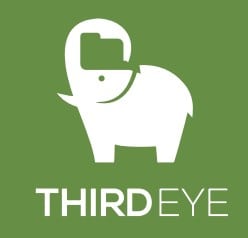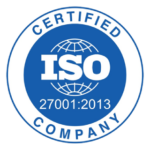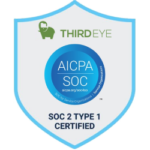Automated Nursing Roster System
A leading multi-specialty hospital group partnered with ThirdEye Data to modernize its nursing roster management across multiple facilities. With 1,500+ beds, 600+ doctors, and over 3,700 staff members, the hospital network needed a scalable solution to overcome the inefficiencies of manual rostering, improve patient care outcomes, and ensure fair, compliant nurse scheduling.
ThirdEye Data implemented an Automated Nursing Roster System that integrates seamlessly with the hospital’s existing HIS and HRMS platforms, enabling real-time shift scheduling, bed-to-nurse allocations, and instant notifications. This solution significantly enhanced operational efficiency, boosted nurse satisfaction, and improved overall patient safety and care delivery.
THE CUSTOMER
BUSINESS GOALS OR CHALLENGES
Business Goals
- Automate nurse shift scheduling to reduce manual effort and errors.
- Ensure fair distribution of rotational and night shifts while complying with labor requirements.
- Enable real-time bed-to-nurse allocation based on specialty, gender, and experience.
- Seamlessly integrate rostering with existing HIS and HRMS systems for data accuracy.
- Deliver instant notifications of shift assignments and patient allocations.
Understanding the Challenges:
- Manual roster management consumed significant time and resources.
- Complex scheduling requirements (rotations, compulsory night shifts, specialty mapping) were difficult to manage fairly.
- Bed-based nurse allocations were not real-time, affecting patient care continuity.
- Lack of integration between HIS and HRMS limited data-driven decision-making.
- Inefficient communication led to delays in shift updates and approvals.
Prerequisites and Preconditions:
- Appointment of a dedicated Project Manager and key stakeholders from Nursing, HR, IT, and Administration.
- Access to HIS and HRMS systems with API documentation and credentials.
- IT infrastructure support for deployment and network configurations.
- Clearly defined rostering policies, exceptions, and specialty-based rules.
- Dedicated UAT resources to test and validate system functionality.
- Optional access to historical rostering data to aid setup and potential AI-driven optimizations.
- Established communication channels for regular updates and issue resolution.
THE SOLUTION
To address the hospital’s requirements, ThirdEye Data developed and deployed a fully Automated Nursing Roster Management System. The solution leverages real-time integrations with HIS and HRMS systems, ensuring accurate, data-driven shift generation and dynamic bed-to-nurse assignments.
The system’s core roster engine incorporates predefined rules such as compulsory night shifts, specialty-based mapping, and leave integrations, while allowing flexibility for admin overrides and approvals. Bed-to-nurse allocations update dynamically based on patient discharges and ward needs, ensuring optimal nurse utilization.
A user-friendly web dashboard enables administrators and supervisors to generate, review, and manage rosters, while a dedicated mobile app provides nurses with instant notifications of shift assignments and patient duties. Integrated audit trails, role-based access, and real-time visibility strengthen compliance, transparency, and accountability.
Solution Highlights
Automated Shift Management with enforcement of 8-hour rotations and mandatory night shifts.
Real-time Bed-to-Nurse Allocation based on specialty, gender, and experience criteria.
Seamless API Integration with HIS and HRMS systems for live data synchronization.
Dedicated Mobile Application for nurses to view shifts and receive real-time updates.
Web Dashboard for administrators to manage rosters, allocations, and reports.
Notification Engine for instant alerts to both nurses and supervisors.
Role-Based Access Control with detailed audit trails for compliance and governance.
Scalable architecture capable of supporting future AI-driven optimizations.
Supported Use Cases
Automated shift generation and approval.
Specialty-based nurse assignments (ICU, OBG, etc.).
Real-time reallocation of nurses upon patient discharge.
Push notifications for shift reminders and duty changes.
Admin alerts for staffing shortages and urgent updates.
Compliance tracking for working hours and policy rules.
Technologies Used
Core System & Backend
Python with Django/Flask for core roster engine and API development.
Microservices-oriented architecture for scalability and modularity.
Database
PostgreSQL for secure, relational data management.
Optional MongoDB for evolving rostering rules and flexible structures.
Frontend
React.js for dynamic, responsive web dashboards.
Tailwind CSS for adaptive, mobile-friendly design.
Mobile Application
React Native for cross-platform compatibility (iOS and Android).
API Integration
RESTful APIs for secure, real-time data exchange with HIS and HRMS.
Notification Service
Firebase Cloud Messaging (FCM) for reliable push notifications.
Cloud Deployment
AWS/Azure cloud environment with containerized deployment for scalability, reliability, and security.
VALUE CREATED
Since deployment three months ago, the Automated Nursing Roster System has delivered measurable results:
- 70% Reduction in Administrative Time: Manual roster preparation that earlier took 6–8 hours per week per unit was reduced to less than 2 hours with automation.
- 95% Accuracy in Bed-to-Nurse Allocation: Automated real-time assignments significantly improved specialty- and ward-specific nurse placements.
- 40% Improvement in Nurse Satisfaction Scores: Internal surveys showed greater fairness in shift distribution, transparency, and communication.
- 30% Reduction in Shift Conflicts & Errors: Automated compliance checks and audit trails minimized double-bookings and scheduling conflicts.
- 20% Reduction in Overtime Costs: Better workload distribution and optimized staff utilization delivered measurable savings.
- Real-Time Visibility: 100% of nursing supervisors reported improved ability to monitor staffing, bed occupancy, and nurse allocations through live dashboards.
- Compliance Adherence at 100%: Automated enforcement of policies such as compulsory night shifts and labor-hour restrictions ensured zero violations during the last 3 months.
- Future Scalability: The modular architecture already enabled addition of new rostering rules and specialty-based configurations without downtime.







